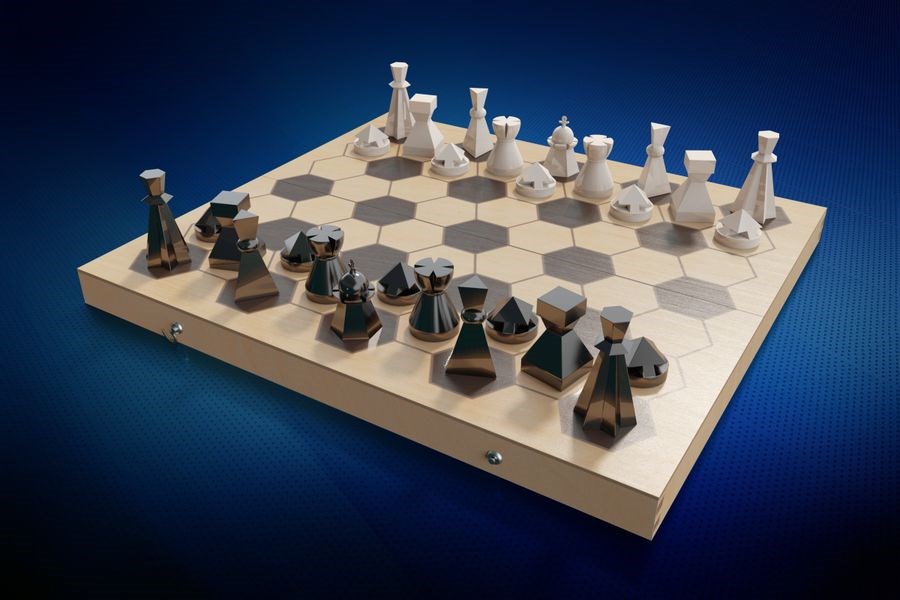Chess is an old game. It has developed along some very different paths, Shogi in Japan, Xiangqi in China, and the chess we are familiar with in the west as examples.
The game has seen hundreds of variants created, and more than a few games which are clearly inspired by chess.
Intellector by Mikhail Lvov is clearly one of the games that holds chess as an inspiration, so much so that since the designer hails from there I almost see it as ‘Russian Chess’.
However, the similarities while noticeable are not so great that this one is merely a variant on chess, at least of the kind which tweak the game with the addition of a new piece, or two.
This game is more of a rebuild from the ground up.
And to continue that analogy Intellector starts from a fresh foundation, using a board of hexagons. This is not the first chess-like game with a hex board. There have been several variants using hexes, probably the best-known is Hexagonal Chess which was invented in 1936 by Wladyslaw Glinski of Poland.
Intellector does go in a slightly different direction with the board though, ending up with the board being roughly a rectangle of hexes, so the board looks more like a regular 8X8 chess board than say Glinski’s variant where the board is itself a hexagon, containing smaller hexes, This leaves Intellector again feeling more familiar.
The pieces here are outstanding in quality with a very modern, if not futuristic artistic approach, making Intellector quite stunning to look at.
The pieces are named quite differently; aggressor, defenssor, liberator and progressor some of the pieces in the game.
While not exactly in love with the names, how often in play do you verbally use names in a game? It suffices to know what the pieces do.
As you might expect the pieces here has movements connected to the hex spaces of the board, and herein lies the greatest challenge to the new player, simply getting to know what piece does what to the level they can concentrate on the game rather than needing to refer to the rules to remember movement.
The game set up does put the ‘aggressor’ pieces (think bishops for a comparison) facing each other without protection, meaning you can essentially trade off the four aggressors to start a game. It may not be the best idea, but it will tempt beginners at least. This is one quirk with the game that is a tad off-putting. It just leaves a move on the opening that frankly detracts from the game if taken, yet teases to be taken. Some might see the presentation as providing a tantalizing decision for players, I am not among those.
Past the aggressor conundrum this is a rather fine game. The quality and look are both high, and that helps to attract interest.
Then it is about learning the game. The game website www.intellector.info converts to English which is a plus, and how to move video are in English at www.boardgamegeek.com another great resource for this one. Do check them out, it’s worth it.




